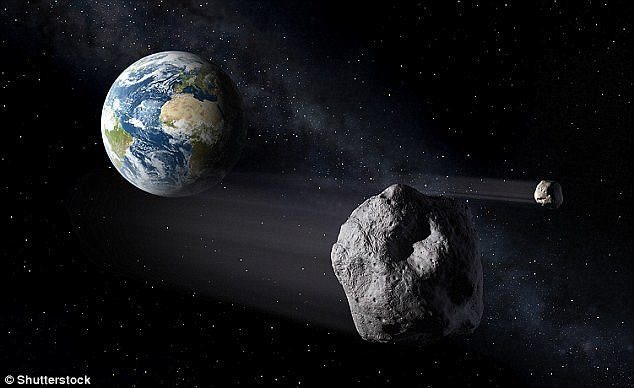
The asteroid, which is 26ft (eight metres) wide, was first spotted by the Pan-STARRS 1 telescope located on the summit of the Haleakalā volcano on Maui, Hawaii on March 25.
On average, the moon orbits around 238,855 miles (384,400km) away from our planet. But the bus-sized object came around 36,8555 miles closer to the Earth than the moon last night.
For years scientists have been trying to work out how to deal with the threat of an asteroid, which could hit us with little or no warning. Now the White House has released an official document describing the plan if a meteor or asteroid was to head our way, and it shows we are under-prepared.
The White House published its 'National Near-Earth Object Preparedness Strategy'. The document 'seeks to improve our nation's preparedness to address the hazard of near-Earth object (NEO) impacts by enhancing the integration of existing national and international assets and adding important capabilities that are currently lacking.'
NEOs are asteroids or comets that have an orbit that brings them near or into Earth's orbit. If one of these was to zoom towards Earth in the future, it would not be the first time.
A 56 foot (17-metre) meteor that struck Chelyabinsk, Russia, in 2013, injured more than 1,000 people came with no warning.
This is why one of the strategies outlined in the document is to improve on Nasa's methods of detecting NEOs before it is too late.
In seven main goals described in the document, the White House also focuses on improving modelling and predicting where NEOs will travel.
The country also plans to improve it emergency alert systems and invest in hi-tech space probes that could annihilate threats.
The document notes, as with other low-probability, high-consequence hazards, 'potential NEO impacts pose a significant and complex challenge.'
'This Strategy is a step in addressing the myriad challenges of managing and reducing the risks posed by both large and small NEOs,' it claims.
At the end of last year, Nasa warned we are not prepared for an asteroid strike.
Dr Joseph Nuth, a researcher at Nasa's Goddard Space Flight Centre in Maryland was speaking at the annual meeting of the American Geophysical Union in December.
He said: 'The biggest problem, basically, is there's not a hell of a lot we can do about it at the moment.'
While dangerous asteroids and comets rarely hit Earth, Dr Nuth warned that the threat was always there.
He said: 'They are the extinction-level events, things like dinosaur killers, they're 50 to 60 million years apart, essentially.
'You could say, of course, we're due, but it's a random course at that point.'
Nasa is working on a series of missions including an asteroid redirect mission, that will see a robotic spaceship visit an asteroid to create an orbiting base for astronauts.
The space agency has a team of scientists who are always watching the skies for potential threats.
But while the US is upping its tactics to seek out the dangerous space rocks, other countries might be even less prepared.
The US is undecided on whether to invest and prepare costly space technology to intercept those that will not affect its own country.
The document, however, suggests the country is looking to collaborate with other nations in the future.
'NEO impacts are a global hazard and could have major environmental, economic, and geopolitical consequences detrimental to the United States, even if the impact is beyond US territory,' it says.
'Although currently a global leader in detecting and tracking NEOs, the United States will depend (in part) on international cooperation and coordination to help develop capabilities for characterization and future capabilities related to the development and implementation of deflection and disruption capabilities for NEOs.'



Reader Comments
to our Newsletter